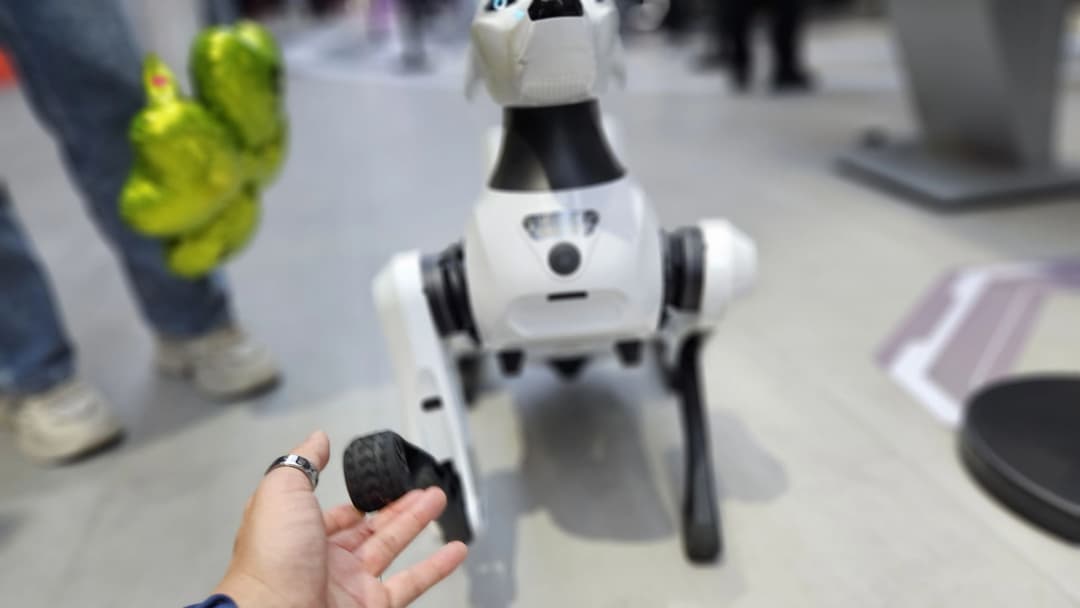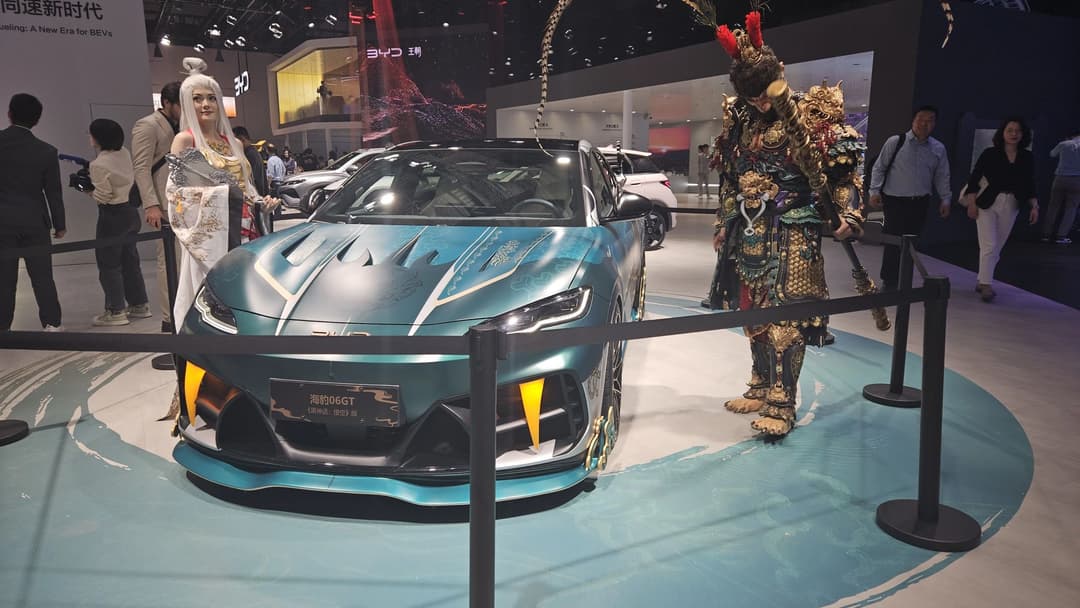2406After two full days, 30,000+ steps, over 100 brands, and enough futuristic tech to make Blade Runner look outdated, here’s what stood out to me from the world’s biggest and electric auto show.
The Future is Electric and Beyond
As expected, all the most exciting and eye catching things at the show were electric: major model reveals, technology showcases and popular models.
The show also gave us a glimpse into where the automotive industry is heading. Besides vehicles, many automakers where showcasing innovations in adjacent areas such as robotics and flying cars.
| What’s on Display | The Big Picture |
| EVs from every major and emerging brand | Cars are now part of an intelligent tech ecosystem |
| Flying cars from XPENG, FAW, and Chery | Mobility is expanding vertically (literally) |
| Humanoid robots from Chery and GAC | Robotics are being integrated into dealerships, factories, and even driving experiences |
Chinese Automakers: Leading the Innovation Race
Chinese automakers are no longer “closing the gap.” They are now leading innovation in key areas:
- Battery Tech: Fast-charging, longer-lasting, and increasingly integrated into overall vehicle architecture. BYD did a demonstratin of their hyped 1000 kW charging.
- Digital UX: Massive touchscreens, seamless AI assistants, and voice-controlled everything.
- Advanced Driver Assistance: Lidar, radar, and in-house-developed AI systems that rival the best in Silicon Valley.
The highly competitive nature of the chinese EV market has required automakers to innovate at breakneck speed. This will likely result in Chinese automakers continuing to surge ahead and increase the gap between themselves and the rest of the world.
Flying Cars & Humanoids
Chinese automakers aren’t just building electric cars, they’re redefining personal transport and mobility. We witnessed several demonstrations of humanoid robots undertaking various tasks. Many of these manufcaturers are already using humanoid-like robots in their factories, including Geely and Zeekr.
When it came to flying cars on display, it wasn't just XPENG, many of the major brands also had their protypes on display.
| XPENG “Land Aircraft Carrier” | GAC & Chery Robots |
| Combines road EV + flying eVTOL module | GoMate robot navigates factory floors, built on EV tech |
| Nearly 5,000 pre-orders already | Chery’s Mornine serves customers in Malaysia dealerships |
| Deliveries start in 2026 | Plans to scale globally soon |

At the show He Xiaopeng (XPENG’s CEO) wasn’t just showing off hardware, he was debating flying cars with a humanoid robot named IRON. Yes, a robot took the stage. Yes, it was weirdly convincing.
Chinese EV Value Equation Is Unmatched
In terms of value, it is clear the price to (feature+performance+tech) ratio of Chinese EVs is unmatched. What you'd pay $80K+ for in Europe or the US, you get for half that in China with arguably better fit, finish and features.
What impressed me most? The consistency in build quality. Flush panels, premium interiors, and intuitive tech integration, even in entry-level models.
The chinese automakers now how to put together a cohesive, well-packaged product.
Smart Synergy: One Tech Stack to Rule Them All
There’s a reason China can build EVs, flying cars, and humanoid robots all at once, they share the same DNA:
- Core hardware: AI chips, sensors, control architecture
- Supply chain: 80% overlap between eVTOLs and EVs
- Production scale: 30M+ vehicles/year means even niche products are viable at scale
As one exec put it: “Flying cars are just electric vehicles that fly.” The lines are blurring, fast. It appears only a matter of time before flying cars become another mode of transport, at least from a technology stand-point.
Legacy Automakers: Leaning on History, Borrowing Platforms
Compared to the aggressive innovation of Chinese brands, legacy automakers felt like they were playing catch-up.
Major brands such as Porsche, Volkswagen, Mercedes-Benz had less EV innovations to showcase, instead highlighted their brand heritage and performance credientials.
The brands that were showcasing cutting edge EVs where showcasing models built on shared EV platforms with Chinese joint venture partners.
Phone Makers are Now Car Makers
From what was showcased at the show and what I observed on the streets of Shanghai, phone makers are the new disruptors of the EV industry. These are the ones to wtach out for:
- Xiaomi: Sleek EVs that feel like smartphones on wheels
- Huawei (via JV brands such as Aito and Avatr): Impressive digital cockpits and driving systems
These are no longer tech companies "dabbling" in cars, they’re serious contenders in the smart mobility race.
Australia on the Radar
I had multiple conversations where Australia came up. Despite our small population, brands see us as:
- A key export market with strong EV growth potential
- A useful test bed for smart mobility due to regulatory flexibility
- A surprisingly influential player in global rollout strategies
Expect to see more Chinese EVs coming down under and possibly flying car in the near future.

The Global Auto Hierarchy Has Shifted
China has achieved what once seemed unlikely: a structural advantage in EV innovation. For other brands to keep pace , or stay relevant may require joint vntures with Chinese OEMs, licensing, or acquisitions—otherwise, the gap could widen.
About the author
Stay up to date with the latest EV news
- Get the latest news and update
- New EV model releases
- Get money savings-deal



















